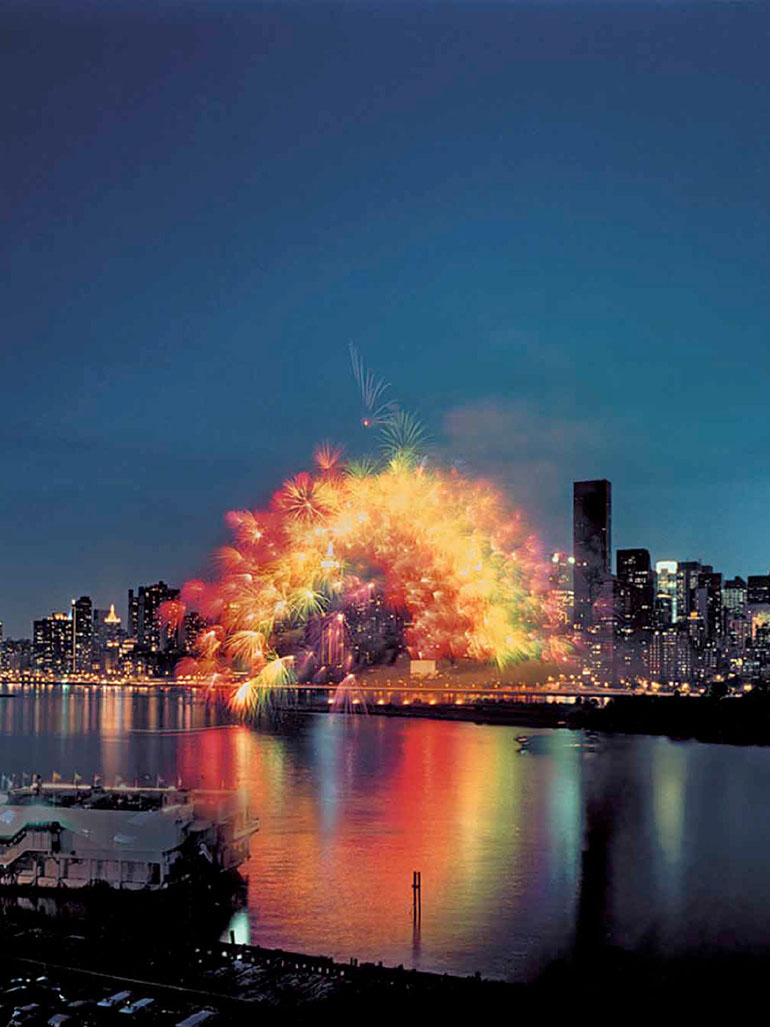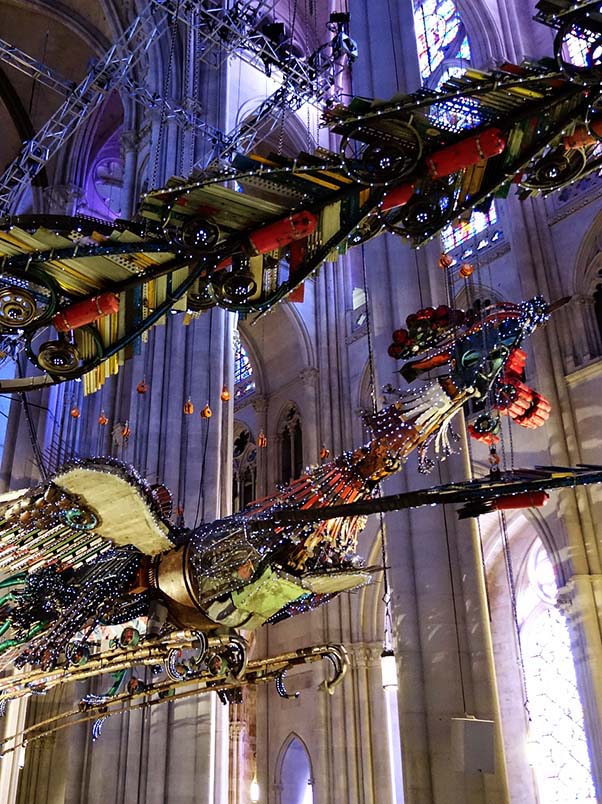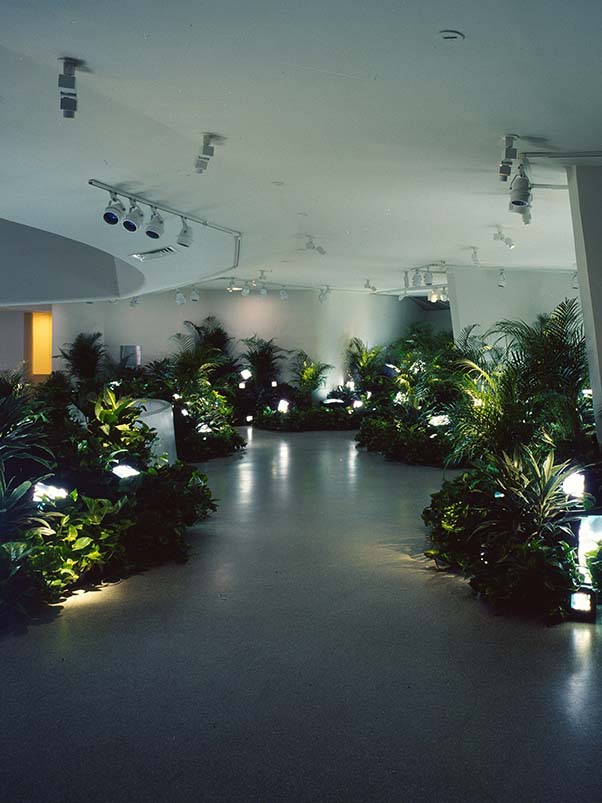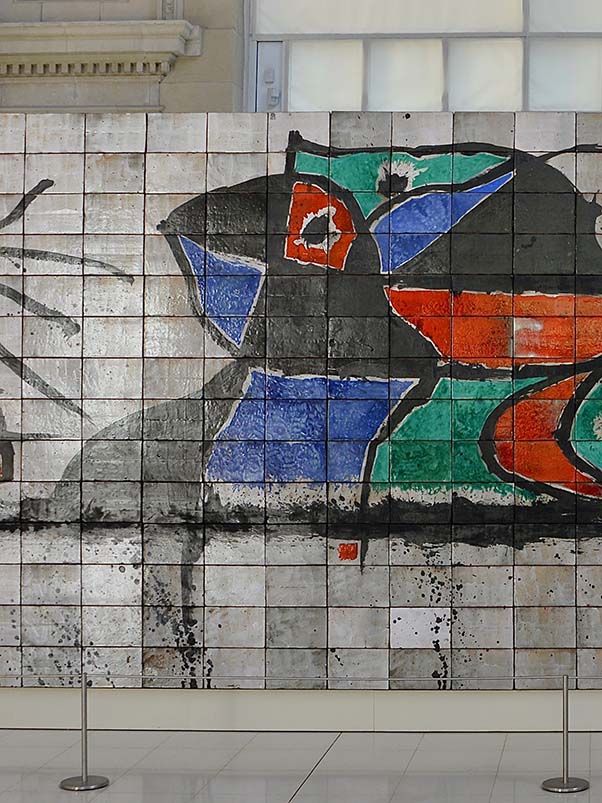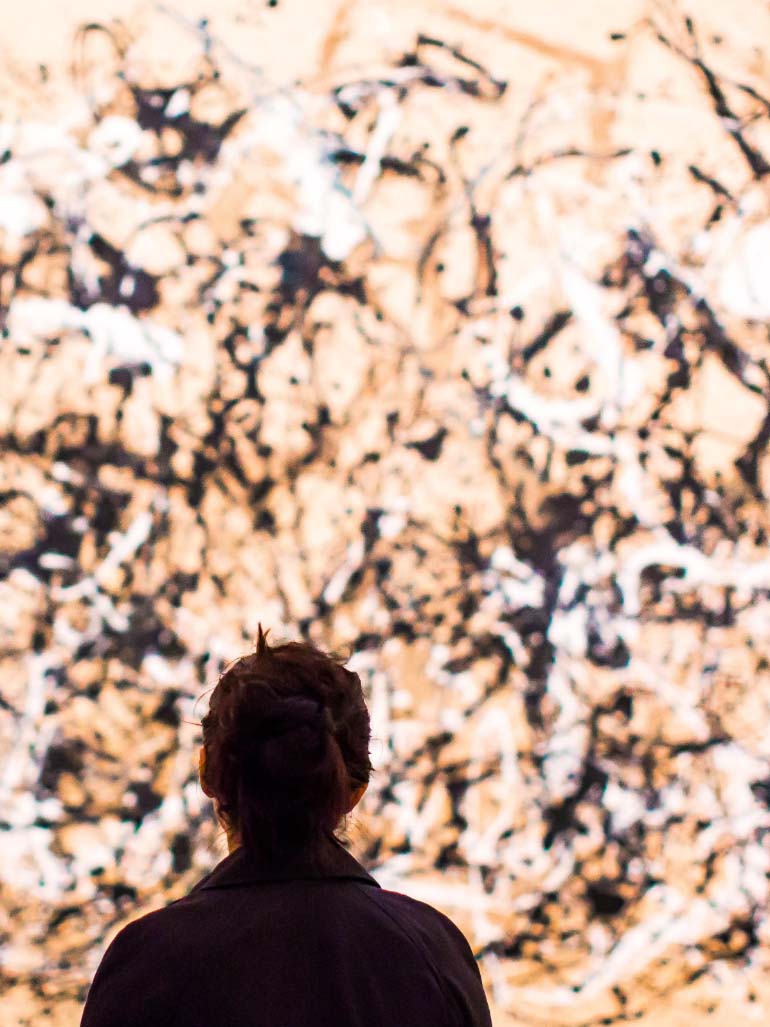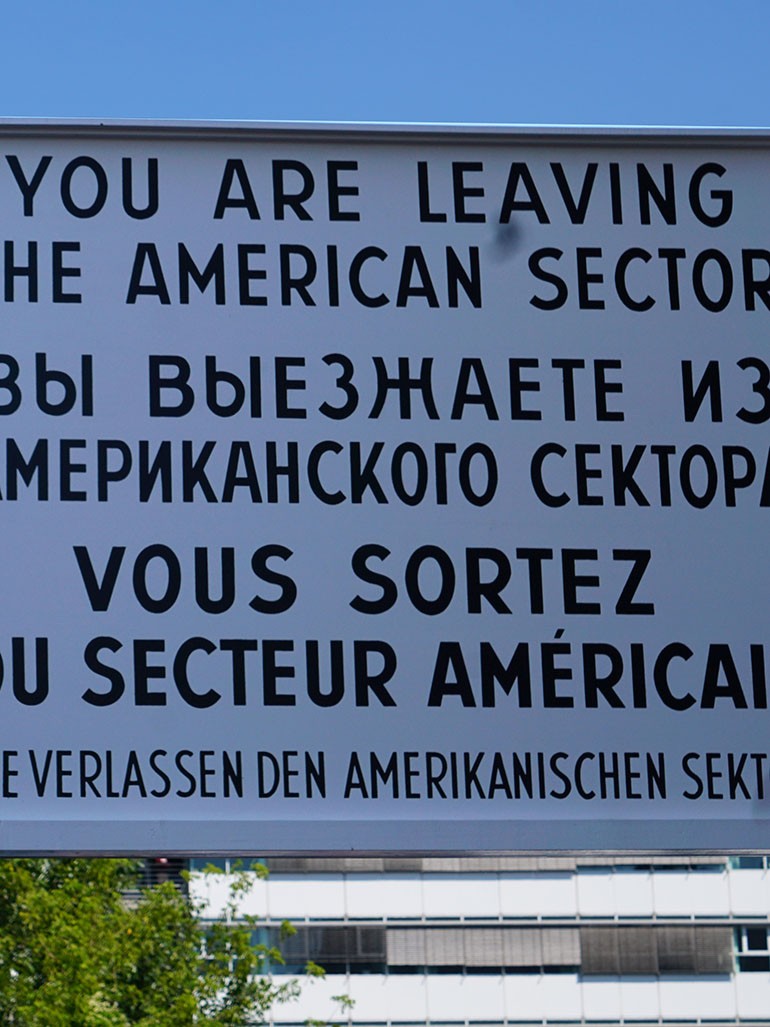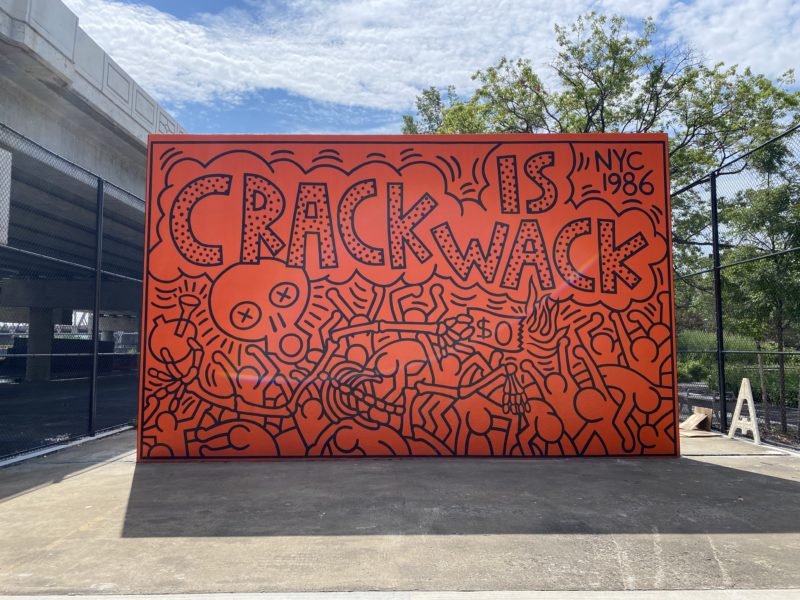
E. 127 St., 2 Ave. and Harlem River Dr, New York, NY 10035, US Copy to clipboard
40.804744, -73.931836 Copy to clipboard
Best visit time
Daytime for the best visibility. Avoid extreme weather conditions.
Introduction
Crack is Wack is regarded as the Keith Haring’s 1 most important painting and the most iconic mural in the New York neighborhoods. When former art student Alejandro Bonilla Sr. first saw the Crack is Wack mural, he said:
I saw it, and I thought: that must be a Keith Haring!
That shows just how well-recognized Keith Haring’s painting style is in the art world and beyond. Crack is Wack was first created on June 27, 1986, painted on two sides of a wall in a handball court in Harlem River Park in 127th Street. Since the mural was created, the spot has been repainted and buffed after the original mural was vandalized 2. The mural has been fortified by a protective edifice and scrim, secluded from the public since 2015, while the nearby Harlem River Drive freeway underwent reconstruction.
Is the mural still there?
Last summer (2019), the New York City Parks, in collaboration with the Keith Haring Foundation, commissioned two artists to restore and repaint the mural. In October, it was reopened to the public for the first time in four years. Today, the piece, which represents Harlem as well as art history, has been refurbished and restored.
Why did Haring choose that spot?
Like many other street artists of the time, Haring chose a spot with the largest potential for visibility. The wall of the deserted handball court located along the Harlem River Drive was the perfect spot because it had the appearance of a large billboard 3, like some of the ones that you would typically see on a busy highway.
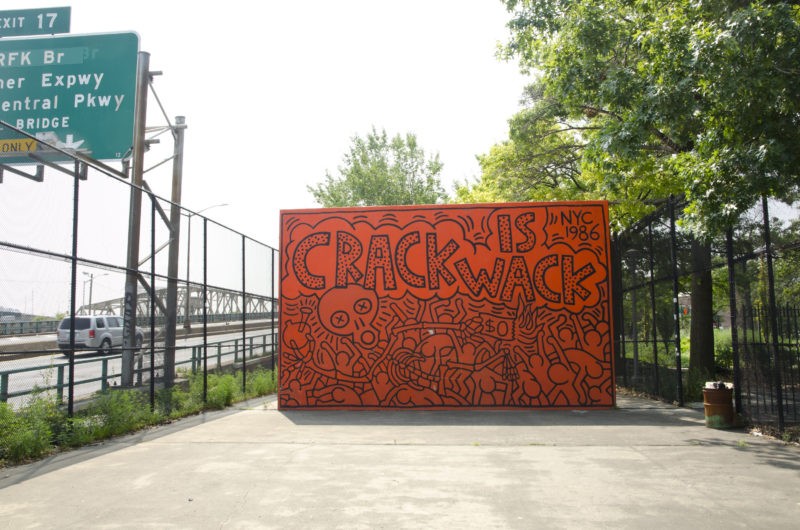
Facing jail time
As usual, I didn’t ask for permission, and I Just brought my ladders and paints.
As usual, I didn’t ask for permission, and I Just brought my ladders and paints.
Without permission from the Parks Department, Haring climbed a ladder and started painting the mural, which he finished in just one day. And to his surprise, he wasn’t stopped or questioned by the authorities while painting, saying that:
When you have a van, ladders, and paint, policemen don’t even consider asking whether you have any permission, they just assume you do.
The work was completed in a day and was titled Crack Is Wack. But soon, as Haring was wrapping up, one policeman arrested Haring after finding out that the painting did not have a legal permit. He faced a huge fine and possible jail time, but the mural’s instant popularity saved him.
In the late 1980s, crack was a national problem, and the message on the painting resonated with many people, especially the media, who widely covered the mural. So the publicity of the mural reduced the fine to just a $25 penalty for disorderly conduct and zero jail time.
The park was later changed names to “Crack is Wack Playground”, following the untimely death of Keith Haring due to AIDS complications.
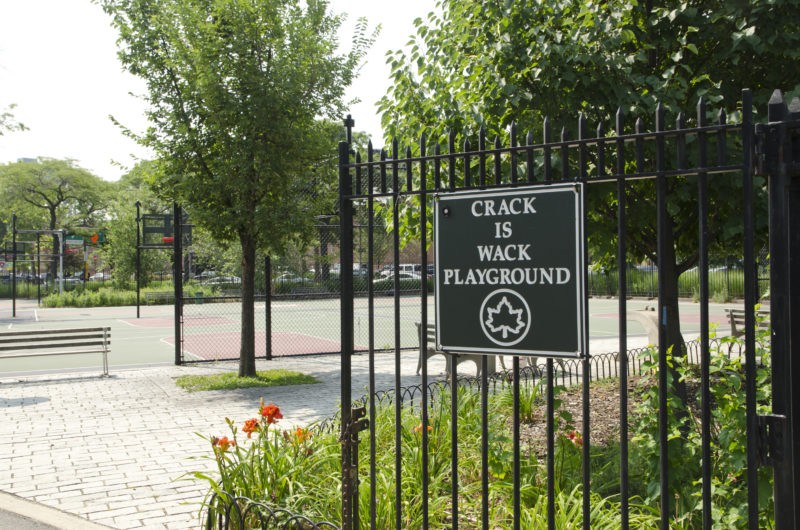
What inspired Haring to paint this mural?
While everyone in the art world and possibly every New Yorker knows about the mural, what is more interesting is the lesser-known story behind the painting since the original version was painted more than three decades ago.
Haring chose to give the mural the title, having witnessed Benny, his studio assistant, undergo years of struggles with crack, which led to a near-death experience in 1984. According to Haring, his young assistant’s struggle was an incredibly distressing experience for all the parties involved, which inspired the talented artist to create a piece that would pass across the message of the struggle. Keith Haring said 45:
Inspired by Benny and appalled by what was happening in the country, but especially in New York, and seeing the slow reaction (as usual) of the government to respond, I decided I had to do an anti-crack painting.
Before the mural, Haring and his young assistant had tried various approaches to rid Benny of his addiction. They had tried everything from seeking help from counselors to calling cocaine hotlines for help. Appalled by the apparent lack of support in this area, and the slow reaction from health and government agencies, Haring decided to create an anti-crack painting that would be seen easily by all.
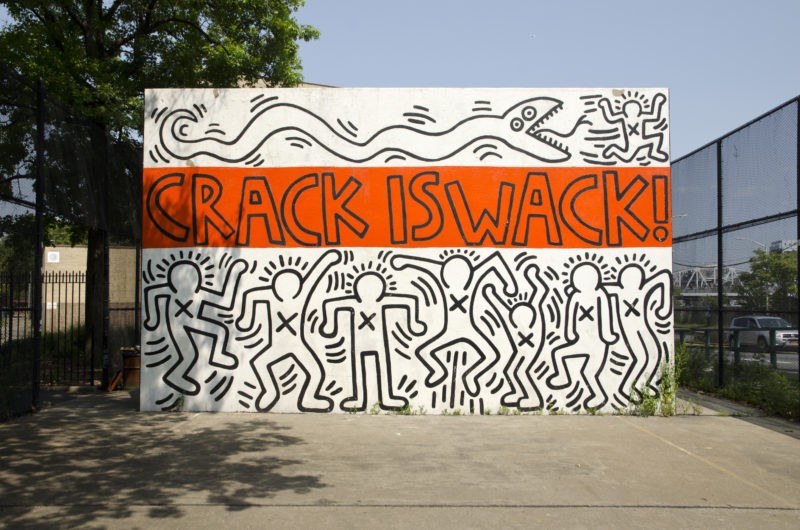
Location
Haring used to drive by the abandoned handball court. That’s why he decided to use its wall to express his frustrations with the government’s lethargies on tackling drug abuse and drug-related issues among young people. The artwork’s location, next to the ceaseless passing vehicles on the Harlem River Drive, ensured that it gathers more daily views than any other mural in the city.
In the late 1980s, drugs claimed many victims’ lives, especially young people in the neighborhoods of cities across the United States.
The choice of the mural location is important: A wall on an abandoned sports ground between Central Harlem and East Harlem. These two neighborhoods are traditionally associated with low-income immigrant inhabitants: African Americans in Central Harlem and Latin America in East Harlem. In these two quarters, teenage boys with Afro-American and Latin-American roots were recognized as the most crack users as well as graffiti 6 writers.
Timeline
| Event | Date |
| Haring illegally paints both sides of handball court, gets arrested post-completion | 1986 Jun 27 |
| Haring gets fined $100 for the mural | 1986 |
| Parks Commissioner commissions Haring to repaint the mural | 1986 |
| About one week later, the painting gets turned into a pro crack mural | 1986 |
| Haring creates second version of Crack is Wack | 1986 |
| Keith Haring passes away | 1990 Feb 16 |
| Renovation | 2007 |
| Renovation | 2012 |
| Renovation | 2019 Oct |
Why the painting still matters today
Admittedly, it was hard to miss the fluorescent orange mural. Although Haring was arrested for vandalism, the piece managed to make rounds in the media. At the time, President Reagan was intent on fighting the war on drugs 78 and the mural was newsworthy and relevant. Each time the media would feature a story on crack, they would flash the popular image in the background.
However, since it was closed for so long, many people almost forgot about it. Some don’t even know if it has been reopened.
Ismael Burgos of M15 -SBS bus station said in an interview with Hyperallergic 910:
I used to get people from Europe, tourists, coming up to me all the time and asking me where it was, and I had to tell them it was closed because of construction [of the Harlem River Drive]. They had no idea it was covered. I haven’t had a tourist ask me about it for about a year. It has been closed for so long. I don’t think people are aware that it’s back up.
Burgos says the mural carries both historical and personal significance for him. He recalled:
AIDS was just burning through the community, and Keith was part of that. I actually gave a print of the mural to my brother as a gift.
Another neighborhood commuter, Kimberly Brooks, states that there should be an unveiling ceremony of the mural so that the public can help get it back inside people’s minds since it has been closed for many years. She said:
It has been part of our community for so long. Are they doing an unveiling? I don’t know think many know about it, because of the location and because the park had been closed for so long. It would be nice to get more people to come out to see it.
However, the New York City Parks Department played down any chance for an opening event.
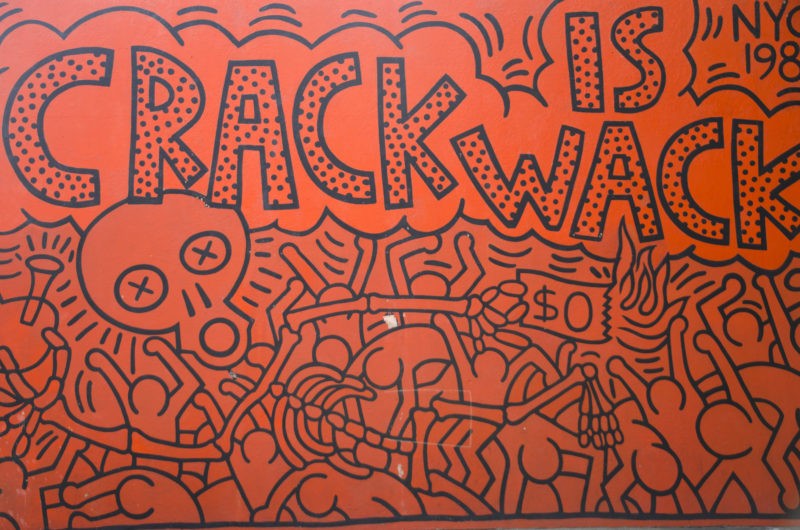
Working with the Parks Department
As Haring’s freedom was spared, his paintings weren’t, as a vandal defaced it and changing it into a pro-crack mural. According to Keith Haring, it was then that a layer of gray paint was added by a “busy bee in the Parks Department”.
However, the Parks Department commissioner then requested Haring to create another mural with help from the department and commissioned him to repeat the mural. The new mural was the now-famous Crack is Wack. Except for Crack is Wack, Haring never recreated any of his previous works twice. According to Gil Vazquez, the acting director and president of the Keith Haring Foundation:
It wasn’t in his nature to recreate the same thing twice.
The Parks Department recognized the artist and the work was put under the protection and jurisdiction of the City Department of Parks 1112.
Restoration
Crack is Wack is so popular that it was recently restored after a months-long process of recreating the original mural. Up until 2007, the mural has undergone several restorations, but the changes were largely superficial. Last year’s refurbishment was the most complete in the history of the painting. Due to the severe water damage to the mural, the artists leading the refurbishment, Louise Hunnicutt and William Tibbals, had to carve and peel away the top layers of the paint. They covered the wall with waterproof concrete and acrylic combined with hardener before recreating the original painting using tracings they created from the original image and photographs from the documentation.
During a phone interview, the artist who led the restoration process, Louise Hunnicutt, said:
I was bringing back the Haring to its original state. People in restoration tend to keep what’s there and work around it, but I had to take everything off the wall before I could do that. The entire restoration took 648 hours. I think it took Keith a day to paint – and about a million hours of practice!
Analysis
The fact that Haring finished the entire mural in just one day shows how talented the artist was. He started the 16-foot-tall (4,9 meter) and 26-foot-wide (7,9 meter) mural with just a simple inscription, “Crack is Wack”. Then he followed it up afterward with a painting of a cubist-eyed monster that is about to swallow a suspended 13 upside-down person. Haring then painted a crack pipe, from which a puff of smoke contains the slogan Crack is Wack, just like in a cartoon speech bubble.
The artist frames all that with partially winged skulls and a burning dollar sign. When one sees the burning dollar sign, the phrase “to have money to burn” suddenly comes to mind.
On top of the mural, Haring painted the head of a horse with eyes that has just bitten off an arm of another figure in the painting. This resembles the horrors of wars depicted in Picasso’s 1415 painting, Guernica 1617, which also has a similar horse. Using this horse, Haring also expresses the horrors of the crack epidemic.
Haring used to plan out his work beyond just in his head. Most of the time, he would study his canvas or wall. Then Haring started to create shapes and lines that fit together. As a homosexual man who intended for his work to express his feelings, he used different shapes. In most of his paintings, including Crack is Wack, there are phallic shapes.
The mural has undergone restorative work, but its essence and the message painted on the wall rings true today as it did in the summer of 1986. The painting is a constant reminder of the dangerous effects of crack on the people who use it and on society.
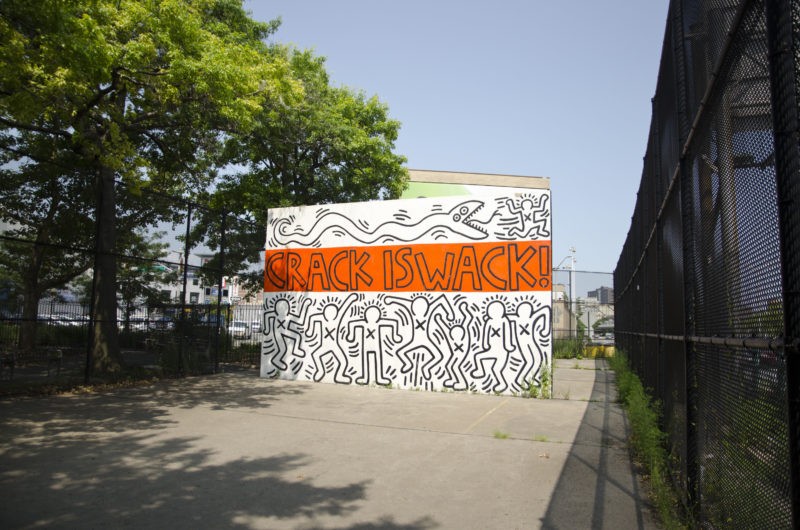
Crack is Wack in pop culture
Today the mural has found its way from the abandoned volleyball court in East Harlem to our tabletops, wardrobes, and other household items, as well as in pop culture.
Crack is Wack skateboards
One instance is the application of Crack is Wack on skateboards. There are skateboard decks made of Maplewood with a top print that features the printed signature of Keith Haring’s painting. The skateboards are not only intended for recreational purposes but also decorative.
While you can skate on them, you also get a wall mount to hang them on your wall like a painting. However, unlike the original mural, the print on skateboards can lose color if exposed to direct sunlight.
Crack is Wack t-shirts
Clothing lines are also using this famous mural to educate society about the dangers of smoking crack. Today you can buy Crack is Wack t-shirts, caps, and hoodies designed and sold by independent artists online.
Crack is Wack memes
There are also thousands of Crack is Wack memes online about famous personalities whose drug history is widely known, including Amy Winehouse, Robert Downey Jr., and Whitney Houston.
In one of Whitney Houston’s most famous interviews on VH1 in 2002, the world’s most beloved pop princess was forced to address what everyone feared. She had noticeably grown thin. Her voice had changed. She was constantly canceling shows and disappointing her fans. Thus, many feared that drugs could have caused the problem.
However, the singer affirmed she never used heroin, literally coming out of her seat with indignation at the suggestion she had used crack.
She said, clearly agitated:
First of all, let’s set one thing straight. Crack is cheap. I make too much money to ever smoke crack. Let’s get that straight. OK? We don’t do crack. We don’t do that. Crack is whack.
The notorious phrase, “Ok? We don’t do crack. We don’t do that. Crack is whack” is so famous and synonymous with the singer that many from outside art believe she coined the phrase crack is wack.
However, Houston was referencing the Keith Haring mural, located just half an hour from her hometown of Newark. Thus she must have seen it when driving along the East 128thStreet or Harlem River Drive.
Conclusion
Originally painted in 1986, Haring was inspired by the crack cocaine epidemic in New York and the failed attempts to break his studio assistant Benny’s addiction.
Crack is Wack is a very famous mural, and thanks to its catchy title, it’s easy to memorize. It has been impactful on society and even turned into a meme a good 30 years after completion.
Crack is Wack is a lasting testament to the enduring power of Keith Haring’s body of work, which arose first in a public space in New York City. It is perhaps the most important piece of art by the artist as it addresses one of the most damaging vices of the 20th and 21st centuries.
Explore nearby
128th St. & 2nd Ave., New York
 Cai Guo-Qiang's rainbow explosionPerformance ended (staged in 2002)2 km away
Cai Guo-Qiang's rainbow explosionPerformance ended (staged in 2002)2 km away Xu Bing's Phoenix sculptureExhibition ended (dismantled in 2014)3 km away
Xu Bing's Phoenix sculptureExhibition ended (dismantled in 2014)3 km away Nam June Paik's TV gardenExhibition ended (dismantled)3 km away
Nam June Paik's TV gardenExhibition ended (dismantled)3 km away Joan Miró's largest artworks3 km away
Joan Miró's largest artworks3 km away
